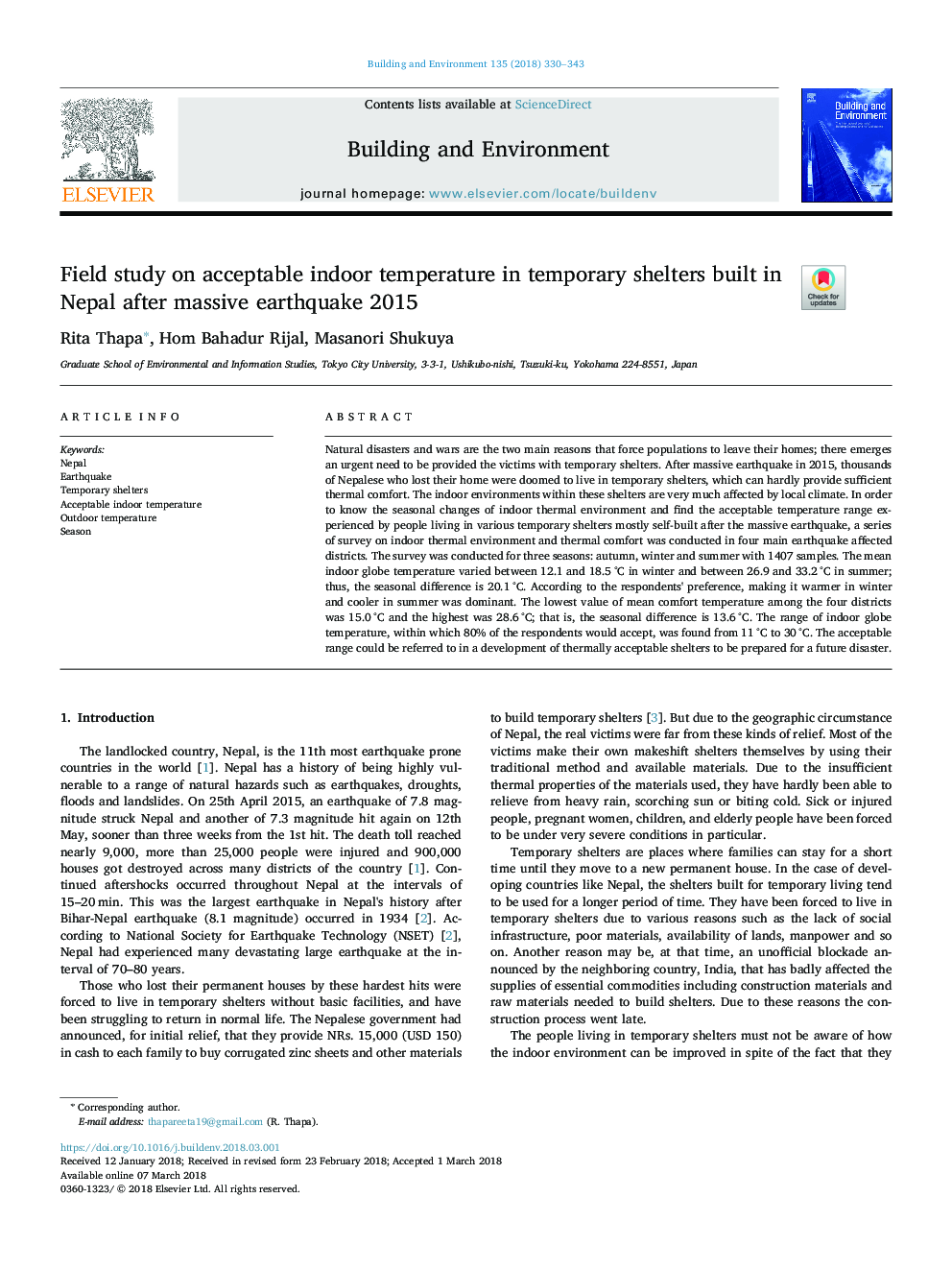| Article ID | Journal | Published Year | Pages | File Type |
|---|---|---|---|---|
| 6697723 | Building and Environment | 2018 | 14 Pages |
Abstract
Natural disasters and wars are the two main reasons that force populations to leave their homes; there emerges an urgent need to be provided the victims with temporary shelters. After massive earthquake in 2015, thousands of Nepalese who lost their home were doomed to live in temporary shelters, which can hardly provide sufficient thermal comfort. The indoor environments within these shelters are very much affected by local climate. In order to know the seasonal changes of indoor thermal environment and find the acceptable temperature range experienced by people living in various temporary shelters mostly self-built after the massive earthquake, a series of survey on indoor thermal environment and thermal comfort was conducted in four main earthquake affected districts. The survey was conducted for three seasons: autumn, winter and summer with 1407 samples. The mean indoor globe temperature varied between 12.1 and 18.5â¯Â°C in winter and between 26.9 and 33.2â¯Â°C in summer; thus, the seasonal difference is 20.1â¯Â°C. According to the respondents' preference, making it warmer in winter and cooler in summer was dominant. The lowest value of mean comfort temperature among the four districts was 15.0â¯Â°C and the highest was 28.6â¯Â°C; that is, the seasonal difference is 13.6â¯Â°C. The range of indoor globe temperature, within which 80% of the respondents would accept, was found from 11â¯Â°C to 30â¯Â°C. The acceptable range could be referred to in a development of thermally acceptable shelters to be prepared for a future disaster.
Related Topics
Physical Sciences and Engineering
Energy
Renewable Energy, Sustainability and the Environment
Authors
Rita Thapa, Hom Bahadur Rijal, Masanori Shukuya,
